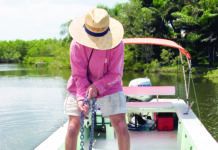Keel Lift
I am an engineer with a good understanding of Bernoullis principle, but confess that I don’t understand how a keel produces lift. Airplane wings and sails are asymmetrical, so that the fluid flowing past has farther to go (and therefore must go faster) on the lifting side than on the other side. Keels are symmetrical and cannot work that way. And in what direction is the lift supposed to be produced? If on a port tack is the lift supposed to be to port? If lift is applied to the keel, will it increase heeling? When heeled is it supposed to lift the boat slightly out of the water to decrease wetted surface and increase speed? On a winged keel is the lift supposed to be in the up direction (which on a port tack, when heeled, would have a starboard directional component)?
I can only surmise that if keels really do produce lift it has to be because of side slippage, causing different pressures on the two sides; but I don’t see how this would make a boat faster, since the lift produced would be at right angles to its motion, with no forward component.
All of this has puzzled me for some time. If you can explain how and in what direction a keel develops lift, Id sure appreciate it.
Mike Poskozim
Waxhaw, North Carolina
Youve got it about right.
Steve Killings book, Yacht Design Explained, (W.W. Norton, 256 pages, $49.95) has a good, detailed explanation of how the Bernoulli effect creates keel lift. True, the two sides of the keel are symmetrical, so it wont create lift going downwind. The key element is leeway. Upwind, as soon as the keel begins slipping sideways (angle of leeway), one side becomes leeward and the other windward. According to Bernoulli, the faster a fluid moves, the lower its pressure. As the keel slips sideways, the windward side becomes the long way for water to travel around the foil (keel), creating lower pressure. The pressure difference between the windward side (long) and leeward side (short) generates lift in the direction of the windward side. So, without leeway, there can be no lift.
As for the direction of lift, the term lift is defined as a force perpendicular to the direction of movement and drag as a force in line with the direction of movement; by definition, Killing told us, they are always at right angles to one another.
Unfortunately, lift does not make the boat faster. Killing said, There is no forward component of force produced by the keel. If we could produce lift without drag all our boats would be faster. But what the keel does do for us, is create lift which balances the side force of the sails. And it is the sails working in air that have the forward component called driving force.
Regarding winglets on keels, they are basically to prevent the drag-inducing vortices that come off large bulb keels with long tip cords. The reason Ben Lexcen created Australia IIs wing keel was to lower the center of gravity to improve stability. Again, Killing has a lengthy discussion on this that you might find interesting.
Killing sums up by saying that an efficient keel is one that produces the required lift at a very low leeway angle while creating minimum drag.




































